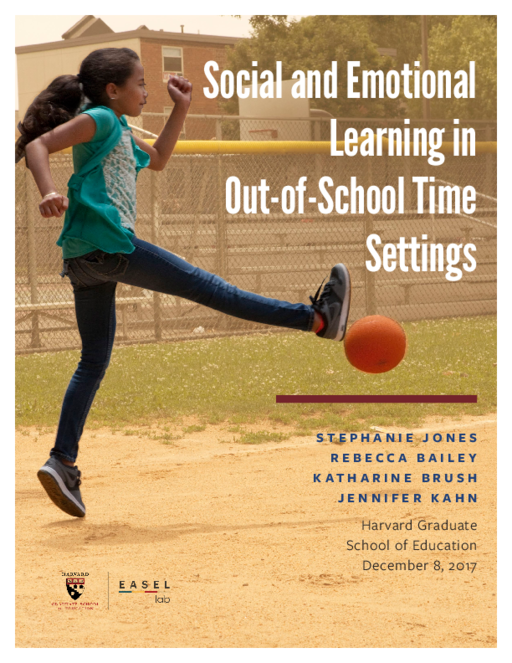Breadcrumb
- Wallace
- Reports
- Social And Emotional Learning In...
Social and Emotional Learning in Out-of-School Time Settings

Summary
How we did this
This brief is part of a series commissioned by the Wallace Foundation that draws upon Navigating Social and Emotional Learning from the Inside Out, a resource developed by our team to analyze widely-used SEL programs and provide comprehensive details, transparent information, and cross-program analyses about the various in-school and out-of-school-time programs that are currently available in US contexts.
OST programs have many advantages in implementing SEL. They have flexibility in pursuing their goals and mission. They don't face the curricular demands that can undermine SEL taught in schools. They also tend to be less structured. This offers participating students more opportunities to develop relationships that enhance their SEL.
SEL can therefore yield significant benefits in OST settings. When OST programs are intentional about SEL, it is easier for them to work together with schools. And, the more participating students can benefit.
This brief brings a sharper focus to SEL programs that work well in OST settings. It identifies three evidence-based programs (Before the Bullying, Girls on the Run, and Wings) designed for OST. It highlights the key features and components of each program. It also breaks down grade range, program focus, instructional strategy, skill focus, and other features.
Because there are so few SEL programs tailored for OST, this brief also identifies SEL programs adaptable to OST settings. These school-based programs focus on a variety of skills and use different teaching strategies. They provide varying levels of implementation support and have different levels of effectiveness. Practitioners can use charts to determine which programs are adaptable to their context, or have the potential to be.
The authors conclude by offering guidelines and considerations to help OST practitioners adapt curricula and make "best fit" program decisions. These guidelines include underlying principles of successful SEL implementation and five key considerations for program adaptation. There is also a diagram to walk practitioners through the program selection process. An attachment includes a worksheet for OST settings with three hypothetical case studies.

A rigorous review of afterschool programs targeting SEL found that program participants demonstrated positive changes in feelings and attitudes, behavioral adjustment, and academic performance.
Key Takeaways
- OST programs have many advantages in implementing SEL programming because they have more flexibility and are less structured than traditional schooling.
- When OST programs are intentional about addressing SEL, they can partner with schools more effectively.
- There are relatively few SEL programs geared specifically for OST. As a result, many afterschool programs borrow from or adapt in-school SEL curriculum.
- A set of guidelines and considerations can help practitioners make “best fit” decisions for successful SEL adaptation and implementation.
- Practitioners can use charts to determine which programs are adaptable to their context, or have the potential to be.



